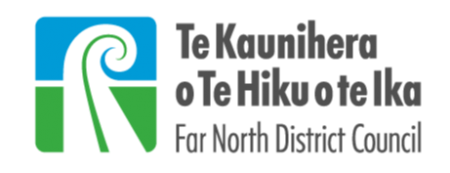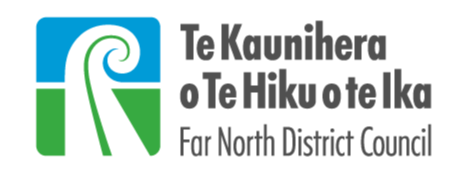Natural hazards
The Far North District experiences natural hazards in many different forms. The main areas of effect are slippage and flooding.
Identifying and addressing natural hazards
The Regional Council identifies hazard areas such as coastal hazard, indicative areas of flooding and erosion prone. FNDC has GIS mapping which identifies hazards, suspect ground and known events. Refer to Maps and Aerials for links.
Natural hazards are addressed by a range of regulatory processes, some of which arise under the Building Act 2004.The Building Act defines a 'natural hazard' as:-
- Erosion including coastal erosion, bank erosion, and sheet erosion
- Falling debris including soil, rock, snow, and ice
- Subsidence
- Inundation including flooding, overland flow, storm surge, tidal effects & ponding
- Slippage
FNDC as the Building Consent Authority (BCA) must refuse to grant a building consent for the construction of a building, or major alterations to a building, under Section 71(1)(a) & (b) of the Building Act if:
The land is subject to 1 or more natural hazards or the building work is likely to accelerate, worsen, or result in a natural hazard on that land, or any other property.
However, under Section 71(2) the restriction on the BCA's ability to grant a building consent does not apply if:
The BCA is satisfied that 'adequate provision' has been made, or will be made, to:-
(a) protect the land, building work, or other property from the natural hazard (s); or
(b) restore any damage to that land or other property as a result of the building work.
What does 'adequate provision' mean?
In order to demonstrate that 'adequate provision' has been made for the purposes of Section 71(2)(a) or (b), applicants are required to provide a site-specific report from a Chartered Professional Engineer in support of their building consent application. The FNDC will take that report into account when deciding whether Sections 71(2)(a) or (b) apply.
The report must address Sections 71(2)(a) and/or (b) (as the case may be) and confirm that the applicable statutory requirements will be satisfied, including:
- Confirmation that suitable mitigation of the relevant natural hazard has been or will be achieved on site;
- Confirmation that the proposed design incorporates appropriate protection of the land, the building work, or other property and/or that any damage to the land or other property will be restored;
- Producer Statement (PS1) certification of the design;
- Assessment of compliance with the NZ Building Code
Despite the requirements of Section 71, there are instances when the BCA must grant a building consent for building work on land subject to natural hazards. The criteria are set out in section 72 of the Building Act. They are:
- The proposed building work will not accelerate, worsen, or result in a natural hazard on the land on which the building work is to be carried out or on any other property; and
- The land is subject to, or is likely to be subject to, one or more natural hazards; and
- It is reasonable to grant a waiver or modification of the building code in respect of the natural hazard (if required).
All of these criteria must be satisfied before section 72 will operate to avoid the restriction on a BCA's ability to grant a building consent that arises under section 71(1).
When a building consent is granted under section 72, the BCA must notify the Registrar-General of Land of the consent. The Registrar-General of Land will then place an entry on the title of the land, confirming that the building consent has been granted under section 72 and identifying the natural hazard concerned (see Section 74 of the Building Act for more details).
Please note that an entry on a title under Section 74 of the Building Act may affect insurance arrangements for the proposed building work, or any existing building or land to which it relates.

